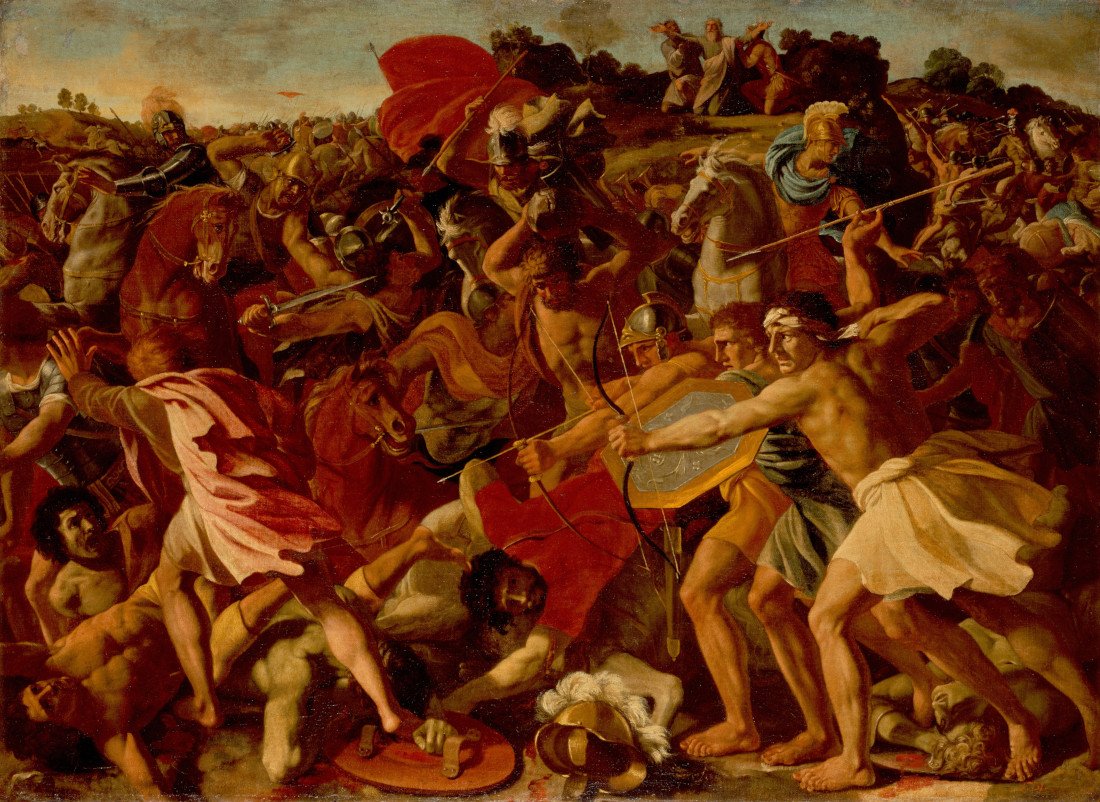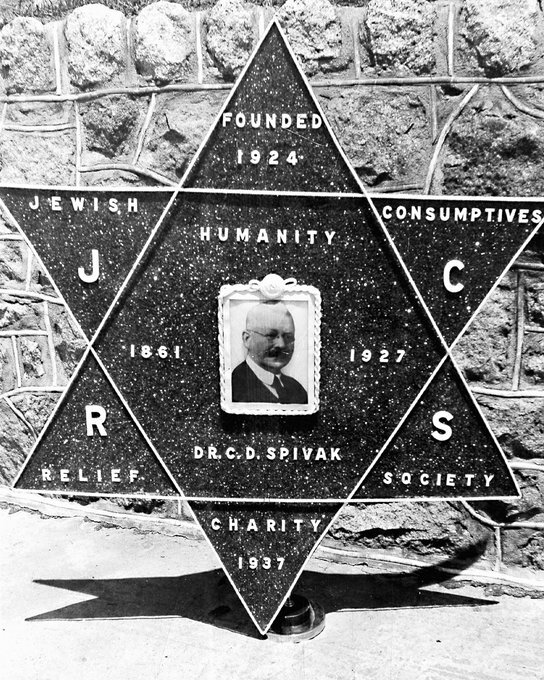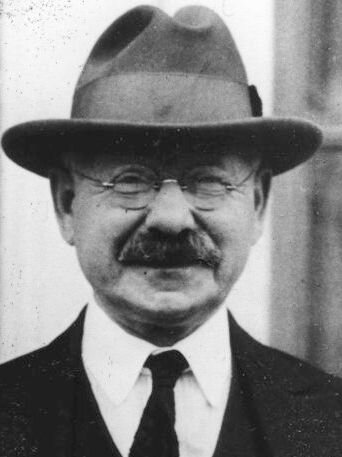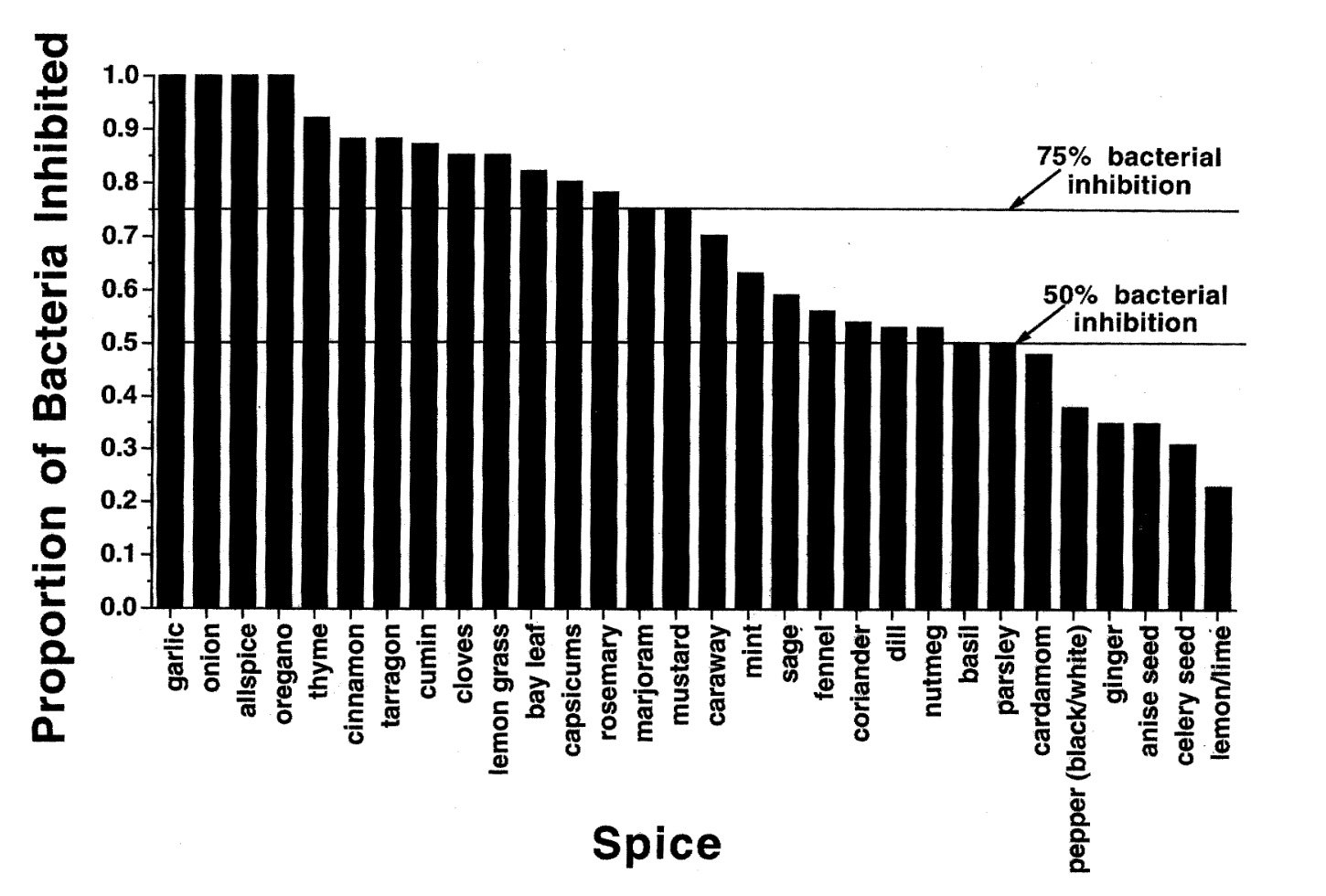After the Israelites successfully defeat an attack from the Tribe of Amalek, Moses commemorates the battle with an Altar and a promise.
17: 14-16 שמות
וַיֹּ֨אמֶר יְהֹוָ֜ה אֶל־מֹשֶׁ֗ה כְּתֹ֨ב זֹ֤את זִכָּרוֹן֙ בַּסֵּ֔פֶר וְשִׂ֖ים בְּאזְנֵ֣י יְהוֹשֻׁ֑עַ כִּֽי־מָחֹ֤ה אֶמְחֶה֙ אֶת־זֵ֣כֶר עֲמָלֵ֔ק מתַּ֖חַת הַשָּׁמָֽיִם: וַיִּ֥בֶן מֹשֶׁ֖ה מִזְבֵּ֑חַ וַיִּקְרָ֥א שְׁמ֖וֹ יְהֹוָ֥ה ׀ נִסִּֽי׃ וַיֹּ֗אמֶר כִּֽי־יָד֙ עַל־כֵּ֣ס יָ֔הּ מִלְחָמָ֥ה לַיהֹוָ֖ה בַּֽעֲמָלֵ֑ק מִדֹּ֖ר דֹּֽר׃
And the Lord said to Moses, Write this for a memorial in a book, and rehearse it in the ears of Yehoshua: that I will utterly blot out the remembrance of Amalek from under the heaven. And Moses built an altar, and called the name of it Adonay Nissi [the Lord is my Banner] for he said, Because the Lord has sworn by his throne that the Lord will have war with Amalek from generation to generation.
The Two Accounts of the Battle with Amalek
It is important to note that in the Torah there are in fact two accounts of the Battle with Amalek. In this week’s Torah reading the battle with Amalek is described in rather bland terms: “וַיָּבֹ֖א עֲמָלֵ֑ק וַיִּלָּ֥חֶם עִם־יִשְׂרָאֵ֖ל בִּרְפִידִֽם” - “Then Amalek came and fought Israel at Refidim.” But later in the Torah the ugly tactics that Amalek used are described in more detail:
דברים 25: 17-18
זָכ֕וֹר אֵ֛ת אֲשֶׁר־עָשָׂ֥ה לְךָ֖ עֲמָלֵ֑ק בַּדֶּ֖רֶךְ בְּצֵאתְכֶ֥ם מִמִּצְרָֽיִם׃
אֲשֶׁ֨ר קָֽרְךָ֜ בַּדֶּ֗רֶךְ וַיְזַנֵּ֤ב בְּךָ֙ כל־הַנֶּחֱשָׁלִ֣ים אַֽחֲרֶ֔יךָ וְאַתָּ֖ה עָיֵ֣ף וְיָגֵ֑עַ וְלֹ֥א יָרֵ֖א אֱלֹהִֽים
Remember what Amalek did to thee by the way, when you were come out of Egypt: how they met you by the way, and smote the weakest, all that were feeble in thy rear, when thou wast faint and weary; and he feared not God
It is this later account, the one in which Amalek attacked not Israel’s army but its weakest citizens which became seared into the Jewish imagination as an example of cowardice and evil. This behavior is met with a response: to utterly destroy Amalaek.
דברים 25:19
וְהָיָ֡ה בְּהָנִ֣יחַ יְהֹוָ֣ה אֱלֹהֶ֣יךָ ׀ לְ֠ךָ֠ מִכל־אֹ֨יְבֶ֜יךָ מִסָּבִ֗יב בָּאָ֙רֶץ֙ אֲשֶׁ֣ר יְהֹוָה־אֱ֠לֹהֶ֠יךָ נֹתֵ֨ן לְךָ֤ נַחֲלָה֙ לְרִשְׁתָּ֔הּ תִּמְחֶה֙ אֶת־זֵ֣כֶר עֲמָלֵ֔ק מִתַּ֖חַת הַשָּׁמָ֑יִם לֹ֖א תִּשְׁכָּֽח׃
Therefore it shall be, when the Lord your God has given you rest from all thy enemies round about, in the land which the Lord your God gives you for an inheritance to possess it, that you shall blot out the remembrance of Amalek from under heaven; you shall not forget.
And so the account in this week’s parsha of the military victory over Amalek was turned into a humiliating defeat when described in Devarim. And ever since, Amalak became the embodiment of an altogether different type of evil, one that must be forever recalled and forever annihilated.
The Realistic and the Metaphorical Approaches
There have been two streams of interpretation about the events that occurred, what Avi Sagi described as the realistic and the symbolic. The former is perhaps best exemplified in the commentary of the Portuguese medieval exegete Isaac Abarbanel (1437–1508). Amalek had no reason to attack the Israelites, and what is perhaps worse, when they did attack they targeted the weakest civilians. It was the tactics of Amalek that led the Torah to decree their destruction.
פירוש אברבנאל על התורה, דברים 25:17
שנלחם עמהם מבלי סבה, כי הנה הלוחמי' מהם שיעשו מלחמותיהם כנגד האויבים הבאים עליהם לקחת את ארצם ולכבשם ילחמו להנצל מהם, ומהם שילכו לכבוש ארצות גוים אשר לא להם ועל זה ילחמו, אבל עמלק לא היה לו סבה מזה במלחמתו, כי הנה ישראל לא היו עוברים בארצו ובאים להלחם בו לשיצא להלחם בם, וגם לא היה להם ארצות שילך עמלק לכבשם ולחמדתו אותם ילחם בם, אבל היתה לבד מלחמתו בדרך בצאתם ממצרים, ר"ל שהוא יצא לשטן להם בדרך, עובר ומתעבר על ריב לא ל…הנה עמלק לא עשה כן אבל בא וילחם בפתע פתאום וזהו אשר קרך בדרך ר"ל במקרה פתאום בלתי שיעיר בך דבר…שהיה מפחיתות עמלק ופחדו שלא יעצור כח להלחם בישראל פנים בפנים, אבל נלחם עם החלשים שהם הבאים באחרית המחנה ויירא מגשת אל העם מלפניו וזה עם היות ישראל עיף ויגע, וזהו ויזנב בך כל הנחשלים אחריך כי נחשלים הוא כמו נחלשים ככשב כבש, וזכר עוד מפחיתותו באמרו ואתה עיף ויגע
In contrast, the metaphysical approach views Amalek as a concept, as evil embodied, rather than a historic population (although they certainly were the latter). And there is both a human and a divine battle against Amalek, as outlined in the Zohar:
זוהר 2:66א
אָמַר רִבִּי יִצְחָק, כְּתִיב כִּי מָחֹה אֶמְחֶה, וּכְתִיב (דברים כ״ה:י״ט) תִּמְחֶה אֶת זֵכֶר עֲמָלֵק. אֶלָּא, אָמַר קוּדְשָׁא בְּרִיךְ הוּא, אַתּוּן מָחוּן דּוּכְרָנֵיהּ לְתַתָּא, וַאֲנָא אֶמְחֶה דּוּכְרָנֵיהּ לְעֵילָּא
Said R. Isaac: ‘Here it is written: “For I will utterly blot out”, whereas in another passage it says, “Thou shalt blot out the remembrance of Amalek” (Deuteronomy 25:19). The Holy One, blessed be He, said in effect: “You shall blot out his remembrance on earth, and I will blot out his remembrance on high”.
Sagi explains the genesis of this metaphysical battle:
If Amalek stands for metaphysical evil and the people of Israel represent metaphysical good, any unjustified war, motivated by groundless hatred for the people of Israel, comes to symbolize the metaphysical struggle. The identity of the concrete Amalek may therefore vary and is in fact irrelevant, whereas the metaphysical war between good and evil goes on unchanged, with the people of Israel always symbolizing the good.
And then he makes this excellent point:
The punishment meted out to Amalek is thus not immoral; rather, it expresses the hope that good will prevail. The moral problem raised by the biblical story is solved by demonizing the concrete Amalek and, in the course of history, extending the concept of Amalek to include all the enemies of Israel.
Rabbi Shimshon Raphael Hirsch (d. 1888) was another advocate of the “Amalek as a metaphysical” approach:
Shimshon Raphael Hirsch. במעגלי שנה II, 191.
Amalek hates Abraham, who fight for justice against many nations and kingdoms. But Abraham does not fight for these values with the sword or the bow, but rather through peaceful means. There are only two choices here. The sword demands that all divine, humane, ethical and moral values are sacrificed, or at least ignored until victory has been proclaimed. But the voice - God’s voice calling out to human beings from beyond and within themselves, the categorical imperative of the divine moral law."
Nicolas Poussin ca. 1625. Joshua Fights Amalek. Oil on canvas. Hermitage, St. Petersburg
Amalek identified as…
Over the centuries, the metaphysical approach seems became the dominant one. This allowed for any number of real or perceived enemies of one’s own, of the Jewish People, or even part of the Jewish People themselves, to be identified as a spiritual heir of Amalek, and thus, worthy of annihilation. Here are but a few examples:
Muslims
The identification of Muslims with Amalek was not made by the Jews. It comes from the Christian Byzantine chronicler Theophanes (d. 818), who wrote in his Chronographia that “while the Church at that time was being troubled thus by emperors and impious priests, Amalek rose up in the desert, smiting us, the people of Christ.” (Theophanes also suggested that Mohammed suffered from epilepsy, but that is another story.) Later, Pope Urban II used the Amalek image when he addressed his Crusaders at Clermont in 1095: “With Moses, we shall extend unwearied hands in prayer to Heaven, while you go forth and brandish the sword, like dauntless warriors, against Amalek.”
Native Americans
The Puritan preacher (and the “chief agent of the mischief” in the Salem Witch Trials) Cotton Mather (1663-1728) thought of the native Americans, who he referred to as “Indians,” as Amalek. And just like Pope Urban II, Mather borrowed the story from this week’s parsha to rally his troops:
And for a close, Let me mind you, that while you Fight, Wee'l pray. Every good man will do it, in secret and in private every day; and publick Supplications also will be always going for you. We will keep in the Mount with our Hands lifted up, while you are in the Field with your Lives in your Hands, against the Amalek that is now annoying this Israel in the Wilderness…
The French
After the one-armed Horatio Nelson’s victory over the French Navy at the Battle of the Nile in 1798, The Bishop of London could hardly contain himself. “The Man of God, who lifted up his hands to heaven, while Israel fought with Amalek, finds an equal piety with our Admiral… It was a pious confidence in God that induced Moses to lift up his hand [sic] to heaven, while Israel fought with Amalek. It was a like faith that influenced our valiant Nelson, and other Admirals and Generals, while they courageously prevailed over our enemies.” But there was more:
But not to lose sight of the beautiful parallelism between Moses and our Admiral, I must remind you that their piety and faith in God are highly alike and conspicuous. After the Amalekites were smitten before Israel, the Lord commanded Moses “to ‘write the Victory, for a Memorial, in a Book.’ And he built an Altar and called the name of it “Jehovah Nissi” which signifies “the Lord is my Banner.” Thus Moses acknowledged the Lord of Hosts as the God of the armies of Israel….And surely there is not one here present, nor one person in this kingdom, in whose heart there is the least spark of sensibility, who could read the Admiral’s account of the victory without feeling such palpitations as never fail to excite tears of joy. These are his words: “Almighty God has given victory to the British fleet…”
“These sandy deserts, where the Israelites cried for water, and where Moses stood with his rod lifted up to Heaven, are comparatively near the spot where, as the papers stated, fifteen hundred of the French army, under General Bounaparte [sic], died of famine and thirst; where the splendid victory, for which this day we bless God, was obtained; where Admiral Nelson, like another Moses, lifted his one hand to Heaven, while his fleet nobly fought, and, as Israel prevailed.”
Armenians
Yes, you read that correctly. Armenians. According to the late Elliott Horowitz, (from whose book Reckless Rites many of the references for this post were taken,) the first identification of Amalek as the Hebrew word for Armenian is found in the tenth-century chronicle Yossipon. I could not find it, but I am sure it is there, somewhere.
Christians
Identifying Christians with Amalek was a terribly dangerous thing for the Jews of medieval Europe to do. So they used a kind of code word, or what today, we might call a dog whistle: Christianity=Esau=Amalek. One of the earliest to identify Amalek with Christianity was Nachmanides:
רמב’ן על התורה שמות 17:9
כי המלחמה מן המשפחה הזאת היא הראשונה והאחרונה לישראל, כי עמלק מזרע עשו (שם לו יב), וממנו באה אלינו המלחמה בראשית הגוים, ומזרעו של עשו היה לנו הגלות והחרבן האחרון, כאשר יאמרו רבותינו (ע"ז ב:) שאנחנו היום בגלות אדום, וכאשר ינוצח הוא, ויחלש הוא ועמים רבים אשר אתו, ממנה נושע לעולם, כאשר אמר (עובדיה א כא) ועלו מושיעים בהר ציון לשפוט את הר עשו והיתה לה' המלוכה
The first and final wars against Israel stem from this family, as Amalek is of the descendants of Esau. It is from him who stood at the head of the nations [in power] that the [first] war came against us. From Esau’s descendants, [namely, Rome], the [present] exile and the last destruction of the Sanctuary came upon us, just as our Rabbis have said that today we are in the exile of Edom. When he will be vanquished, together with the nations that are with him shall be weakened, we shall be redeemed forever, just as [the prophet] said, “And saviors shall come up on Mount Zion, to judge the mount of Esau; and the kingdom shall be the Eternal’s.” (Obad1:21)
Horowitz wrote that “in asserting that Edom/Esau “together with the nations that are with him shall be weakened, we shall be redeemed forever” Nahmanides presumably meant European Christendom under the spiritual rule of Rome, whose defeat, then, he saw as a prerequisite to Israel’s ultimate redemption” (Reckless Rites 127).
However, Nachmanides added an important - and novel - caveat to the fight against Amalek-Christianity. It was to be limited to the time when there was a Jewish king ruling over his people:
רמב’ן על התורה שמות 17:10
ויש מפרשים כי כאשר תהיה יד על כסא ה' תהיה מלחמה לה' בעמלק, וכן תהיה מדור לדור והענין, כי כאשר יהיה מלך בישראל יושב על כסא ה' ילחם בעמלק, והוא רמז לשאול המלך הראשון, וכן מדר דר, לאמר כי כל מלך בישראל חייב להלחם בהם עד שימח
The purport of this is that when there will be a king in Israel sitting upon the throne of the Eternal, he shall wage war against Amalek, thus alluding to Saul, the first king [of Israel]. And so shall it continue from generation to generation, that every king of Israel shall be duty-bound to fight with them until their name will extinct.
This interpretation, incidentally, is found nowhere in classic rabbinic thought, though it had been suggested by an earlier commentator, Joseph ben Isaac Bekhor Shor, who lived in the twelfth century.
Following the savage anti-Jewish riots of the twelfth century, several liturgical poems (piyyutim) called for God to avenge the blood of murdered Jews. One of these is the piyyut אמוני שלומי ישראל by Hillel ben Yaakov of Bonn. After witnessing the pogrom at Blois in 1171, he too used the code word of Esau to identify the Christians who had perpetrated the mass murders.
הַקֹּל קוֹל יַעֲקֹב בִּצְוָחָה וּבִנְהִימָה, מִדַּם שֶׁשָּׁפְכוּ יְדֵי עֵשָׁו לְהִנָּקְמָה
Jacob's voice was cries out and wails, for the blood spilled by the hands of Esau to be avenged
שְׁפִיכַת דַּם חֲסִידֶיךָ לְעֵינֵינוּ תוֹדִיעַ, וְעַד מָתַי תִּהְיֶה כְּגִבּוֹר לֹא יוּכַל לְהוֹשִׁיעַ, אוֹיְבַי רִיב תָּרִיב וּדְמֵיהֶם תַּשְׁפִּיעַ, אֵל נְקָמוֹת יְיָ אֵל נְקָמוֹת הוֹפִיעַ
The shedding of the blood of your righteous before our eyes will be known, and how long will you be a hero who cannot save, fight my enemies and make their blood flow, God of vengeance, God of vengeance appear!
The Confederate Army
In 1864, Rabbi David Einhorn (1809-1879) preached at the Knesset Israel synagogue on Shabbat Zachor, the Shabbat before Purim. It was the Confederate army that was Amalek. Here is an excerpt:
Amalek is represented in the Bible as the arch-foe of Israel, for he inflicted upon them the most unheard of cruelties, without having been in the least offended by the party attacked; he assaulted the champions of God when they were in a defenceless condition, in a state of utter exhaustion. To carry on a war against such a relentiess foe is an act of selfdefence, not of vengeance. Hence the war-cry: "War for God with Amalek from generation to generation!" It was a war for the existence of God's people, and hence a war for God Himself. In consequence of this arch-enmity against God and His people, Amalek has assumed the type of the evil principle among Israel. It is Amalek's seed, wherever the evil and wicked rule; wherever, especially, rude violence with cheaply bought courage makes war upon defenceless innocence, and wherever a majority in the service of falsehood directs its blows with ruthless fist against the very face of a weak minority. And thus even to-day the war-cry is heard: "God's is the war with Amalek from generation to generation!" Let us then consider how this war should be carried on in our own country and under existing circumstances.
First, — the necessity is presented to us of a war against the Enslavement of Race, which has brought the Republic to the verge of destruction, against an Amalek-seed which is turned into a blood-drenched dragon-seed. Or is it anything else but a deed of Amalek, rebellion against God, to enslave beings created in His image, and to degrade them to a state of beasts having no will of their own? Is it anything else but an act of ruthless and wicked violence, to reduce defenceless human beings to a condition of merchandize, and relentlessly to tear them away from the hearts of husbands, wives, parents, and children?
…God commands no war against the black color, but against the dark deeds of Amalek.
The Nazis
The number of examples of this are simply too numerous to count. Here is the Holocaust Memorial in the Hague. It was designed by Anat Ratzabi, and incorporates an earlier monument known as The Amalek Monument, which surely wins an award for the most inappropriately named Holocaust memorial ever. The Amalek Monument was created in 1967 by Dick Stins and unveiled again in 2007 after a renovation.
The Amalek Monument in the Hague. Dick Stins 1967.
Detail from the Amalke Monument in the Hague.
Jews who wear knitted kippot
In 2013 Rabbi Shalom Cohen, then a member of Shas’s Council of Torah Sages and the head of the Yeshivat Porat Yosef, declared that those who wear knitted skull caps (כיפה סרוגה) were Amalekites. His proof came from the verse this week’s Torah parsha “כִּֽי־יָד֙ עַל־כֵּ֣ס יָ֔הּ” - The Lord has sworn by his throne,” where, he taught, the word כס is an acronym for כיפה סגורה. No, I am not making this up.
“ “כתוב כי יד על כס יה מלחמה לה’ בעמלק, אמרו חכמים שאין הכיסא שלם כל עוד יש עמלק, מה זה ‘כל עוד, ואין הכיסא שלם’? כס זה כיפה סרוגה, שומעים?, כל עוד ויש כיפה סרוגה אין הכיסא שלם, זה עמלק, מתי יהיה הכיסא שלם? כשאין כיפה סרוגה”
Israel’s Minister of Education Yossi Sarid
Sitting next to Cohen when he declared Jews who wore knitted skull caps to be Amalek was Rabbi Ovadia Yosef, from whom Cohen had apparently learned a thing or two. On March 3, 2000 (just before Purim that year) Rabbi Yosef targeted Yossi Sarid (1940-2015), who was then leader of the Meretz party and Israel’s Minister of Education: "God will uproot him just as he uproots Amalek; that is how he will uproot him. Haman is cursed? Yossi Sarid is cursed."
“The name of Amalek was invoked to remind us of the ubiquitous nature of antisemitism, the only hate in the world directed against people who are unknown to those seething with hate for us. People like the Houthis in Yemen who never saw a Jew in their life, yet are determined to destroy the Jewish state; Nazis in Germany who traveled hundreds of miles away from home to kill Jews in Belarus, Lithuania, Hungary, and Morocco even though they had never seen or known much about those Jews, that is the kind of evil we speak about when invoking the memory of Amalek.”
The Arab Armies battling the State of Israel
Here too, there are countless examples of the identification of Arab armies with Amalek. One that caught my eye was written by Mordecai Richler in 1994.
Mordecai Richler, This Year in Jerusalem. Knopf 1995. 204
But we will conclude with another description of Amalek as the Arab enemies of the State of Israel. It was published in 1956 by Rav (“The Rav”) Joseph Soloveitchik in his essay Kol Dodi Dofek. He identified the ever present enemies of Israel as Amalek, in a passage that, following October 7th, is remarkably prescient, not only for accurately describing the aspirations of our enemies, but also the silence of the “pious liberals.” Read it and be afraid. Be very afraid.
The evil intentions of the Arabs are not only directed against our national independence but against the continued existence of the Jewish presence in Israel. They aspire to exterminate (God forbid) the Yishuv — men, women, children, infants, sheep, and cattle (cf: I Samuel 15:3). At a meeting of Mizrachi (the Religious Zionists of America), I repeated, in the name of my father (of blessed memory), that the notion of “the Lord will have war against Amalek from generation to generation” (Exodus 17:16) is not confined to a certain race, but includes a necessary attack against any nation or group infused with mad hatred that directs its enmity against the community of Israel. When a nation emblazons on its standard, “Come, let us cut them off from being a nation so that the name of Israel shall no longer be remembered” (Psalms 83:5), it becomes Amalek. In the 1930’s and 1940’s the Nazis, with Hitler at their helm, filled this role. In this most recent period they were the Amalekites, the representatives of insane hate. Today, the throngs of Nasser and the Mufti have taken their place. If we are again silent, I do not know how we will be judged before God. Do not rely on the justice of the “liberal world.” Those pious liberals were alive fifteen years ago and witnessed the destruction of millions of people with equanimity and did not lift a finger. They are liable to observe, God forbid, the repetition of the bloodbath and not lose a night’s sleep.
Amalek. Forever.















